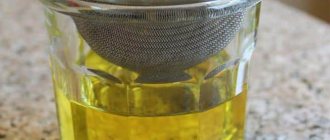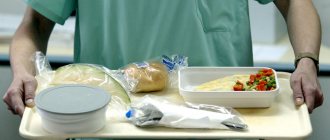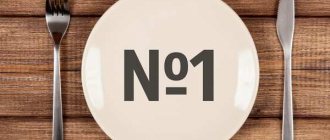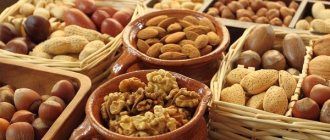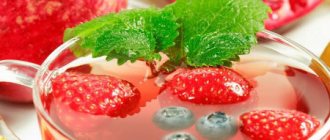The inflammatory process occupies a leading position among the pathological conditions of the digestive tract. In adults and children, gastric damage with impaired secretory function is most often observed. A chronic disease in which there is a change in the mucous membrane, its thinning with the gradual death of the glands that produce hydrochloric acid is atrophic gastritis. At the initial stages, this type of inflammation is accompanied by increased acidity. As the disease progresses, atrophy of the glands gradually develops, accompanied by low acidity.
Qualified patient care includes medication and proper nutrition. An important area of therapy is diet for atrophic gastritis. In case of stomach disease, the menu should correspond to the needs of the body, taking into account the characteristics of the pathology.
Content
- The role of diet for the stomach in atrophic gastritis
- Types of atrophic gastritis
- Treatment with medications
- How to eat with atrophic gastritis Nutrition during an exacerbation
- Nutrition period of remission
- Low acidity
Restrictions on types of gastritis
Gastritis is a common gastrointestinal disease . There are various variants of the disease. What should you pay attention to in the diet of such patients? It should be noted that the first treatment table is suitable for patients with any type of gastritis. As the patient recovers, the diet is adjusted depending on the diagnosis.
Expert opinion
Irina Vasilievna
Practicing gastroenterologist
The list of permitted and prohibited foods depends on the acidity level. If it is low, you should exclude foods that provoke fermentation, in particular whole milk.
Foods that stimulate acid production are allowed, such as lemons or kefir, and fresh juices.
Focal gastritis is distinguished by the presence of individual affected areas . Nutrition for a patient with this diagnosis involves the use of menus No. 1a and No. 2 of the dietary table. With this type of gastritis, longer consumption of pureed foods is expected. The patient is prescribed an additional alkaline drink in the form of mineral waters “Narzan” or “Essentuki” No. 4 or No. 17.
Diffuse gastritis indicates the absence of serious changes in the mucosa. This is a kind of transitional form, when the damage is superficial, but a deterioration in the condition of the organ is already observed. A second table that is not wiped is recommended for patients. Hard-boiled eggs are allowed.
Antral gastritis or antrum gastritis is characterized by damage to the lower part of the stomach. Foods that stimulate secretory activity are excluded from the diet of such patients. The majority of the diet consists of pureed dishes with a slimy consistency.
In the hyperplastic form of atrophic gastritis, polyps or cysts form on the mucosa . Already at the initial stage of the process, the patient is prescribed a general diet, with a limitation of foods that irritate the mucous membrane.
On our website: Dumplings for gastritis: secrets of preparing a dietary dish
Variants of atrophic gastritis
Atrophic changes in the mucous membrane in most cases are preceded by other damaging factors. The main cause is Helicobacter pylori infection. The bacterium causes damage to the epithelium and increased acidity in the stomach, especially affecting the antral mucosa. As the pathology progresses, various forms of the disease may occur, which are reflected in the table.
Table 1.
| Type of gastritis | Characteristics |
| Focal | Single areas of inflammation with atrophy appear on the surface of the mucosa, the production of gastric juice and pepsin is moderately reduced |
| Diffuse | The damage spreads to all parts with gradual degeneration of cells and a decrease in acidity. Epithelial transformation increases the risk of malignant neoplasia and the formation of a zero-acidity state |
| Antrum gastritis | It is characterized by damage to the mucosa mainly in the antrum with hyperproduction of hydrochloric acid. Over time, damaging factors lead to severe atrophy and decreased secretory function |
| Erosive | Single, or less often multiple, erosive defects with perifocal inflammation appear on the surface of the epithelium; at the initial stage, an asymptomatic course is characteristic |
| Hyperplastic | It is a variant of a precancerous condition, which is characterized by a polyposis process. Modified cells produce hydrochloric acid in insufficient quantities, which leads to a large accumulation of mucus in the lumen of the stomach and stagnation of the food bolus |
Gastropathy of the antrum of the stomach
Despite the complex, frightening name, this phenomenon is familiar and understandable to everyone, if you clarify its definition. Gastropathy is a pathological, but not yet painful, condition in which diagnostics shows redness of the gastric mucosa. In other words, inflammation began in the stomach, but did not progress to gastritis: then the doctor diagnoses “gastropathy”. This pathology may indicate the possible appearance of superficial gastritis, therefore, if it was detected in time, treatment can prevent the development of the disease.
There are two forms of gastropathy:
- Diffuse , or widespread, is characterized by damage to multiple areas of the mucous membrane, redness of most of the surface of the stomach. This type of gastropathy is borderline on the path to gastritis or ulcers.
- Focal is found in the antrum of the stomach. The damage is mild, swelling and redness are insignificant, the inflammatory process is mild.
The antrum does not exist as a single unit: the antrum is conventionally called a small area connecting the main part of the stomach and the duodenum.
It accounts for about 30% of the total volume of the empty stomach. During an endoscopic examination, the doctor notices redness of the mucous membrane of the antrum, but the stomach itself is not changed: this condition is called gastropathy of the antrum. They get rid of the pathology with the help of antacids, astringents, and in severe cases, surgical operations.
Treatment with medications
Therapeutic measures for inflammation of the stomach are aimed at eliminating the etiological factor and regulating pathogenetic processes. If atrophic gastritis occurs, diet and medication treatment should be carried out simultaneously. This is a necessary condition for the patient’s recovery, since both directions of therapy complement each other.
In order to eradicate the pathogen, antibacterial therapy is used, which is included in the protocol along with bismuth preparations and proton pump inhibitors. In cases of high acidity, antacids, gastroprotectors, and gastrointestinal motility regulators are additionally prescribed. Against the background of gastritis with low acidity, replacement therapy drugs and enzymes are used. Pain syndrome is relieved with antispasmodics.
Nutrition for erosive gastritis of the stomach: how to eat properly and what diet is indicated
In the acute stage, the patient is allowed only viscous, low-fat soups and porridges, consisting of well-cooked and pureed cereals.
Acute gastritis goes away quickly enough if you follow all the doctor’s recommendations. With chronic erosive inflammation, the situation is more complicated: it cannot be completely cured, but the disease can be brought into a state in which it will not bother the person and will not manifest itself. Acute gastritis and chronic gastritis in the acute stage require a diet depending on what diagnosis is made: gastritis with high acidity or low acidity. The general principles are the same, but there are differences, which are discussed below.
Dietary salads for the New Year: recipes without mayonnaise
What not to eat
The menu for erosive gastritis is not very varied. The following is prohibited:
- spicy dishes (pickles, marinades);
- seasonings;
- fatty foods;
- roughage;
- alcohol;
- carbonated drinks;
- fresh bakery;
- broths.
The amount of flour products should be limited, while the diet initially provides only small quantities of crackers, then a little dried day-old bread. You cannot eat chips, hamburgers, pizza - any fast food. At the same time, the diet should be balanced, with a sufficient amount of vitamins, and quite high in calories, because in case of stomach diseases, not all useful substances are absorbed. After the acute attack is over, the calorie content of meals during the day should be 2-2.5 thousand kcal.
What can you eat
With antral gastritis, you must eat strictly within the diet. The menu includes:
- porridge (first time – pureed, well boiled, then – with milk);
- puree soups;
- vegetable broth and soups based on it;
- baked non-acidic fruits;
- crackers;
- weak tea, preferably green;
- jelly;
- compotes.
For sweets, you can eat marshmallows, honey, marmalade, but little by little. The diet for erosive gastritis should be based on the principle “Do no harm.” You need to focus on table (diet) No. 1 according to Pevzner.
Principles of nutrition for atrophic gastritis
Nutrition for inflammation of the stomach and other parts of the digestive system is different. They are determined by the period of the disease, the level of secretion, and the presence of concomitant pathology. The diet for atrophic gastritis is prescribed according to tables 1 and 2 according to Pevzner. Treatment of ulcers and hyperacid conditions is carried out against the background of diet 1. In case of inflammatory processes of the stomach with a decrease in the production of hydrochloric acid and chronic colitis, diet 2 is prescribed. Features of the diet during different periods of the disease are additionally noted with letters that are indicated after the main table number (1 a, 1 b and etc.).
During the period of exacerbation
The acute period is characterized by the severity of unpleasant symptoms. This should be taken into account when drawing up a menu for atrophic gastritis of the stomach. Food should be mechanically and thermally gentle. It is necessary to exclude foods that irritate the mucous membrane of the digestive tract. You should not allow the food bolus to stagnate in the stomach, so it is better to divide the daily diet into small portions. The weekly menu is designed taking into account the high need for essential nutritional components in order to prevent their deficiency during active inflammation.
During remission
As the inflammatory process subsides, the menu is expanded. A proper diet for chronic atrophic gastritis can increase the period of remission. The diet is selected taking into account the secretory function of the stomach.
In the first weeks after relief of clinical manifestations, they switch to diet 1a if hyperproduction of hydrochloric acid is noted. If inflammation is accompanied by a hypoacid or anacid state, you should eat for atrophic gastritis according to table 2. With reduced secretion, you need to prepare dishes with a juice-like effect, which promote active digestion of food and improve motility. Positive dynamics of the disease is a reason to change the diet to table 15 after a strict weekly course.
Types of erosive gastritis and their features
Erosive gastritis is divided into several subtypes. Depending on which of them is diagnosed, the doctor recommends an individual diet for erosive gastritis of the stomach.
Types of disease according to current:
- spicy;
- chronic - in the period of exacerbation or in remission.
Classification of erosive gastritis according to morphological characteristics:
- erosive-hemorrhagic;
- erosive-ulcerative;
- atrophic.
Acute inflammation of the gastric mucosa occurs due to poisoning, improper fasting, or consumption of food that is unusual for a person, coarse or overly seasoned.
Gastritis becomes chronic if the symptoms have been eliminated, but the disease is not completely cured, or with the continued action of provoking factors.
The erosive-hemorrhagic process is characterized by the presence of erosions on the walls of the stomach that periodically bleed. Erosive-ulcerative - a similar type, but without bleeding. Antral gastritis is observed in the outlet section of the stomach, most often associated with the persistence of Helicobacter pylori.
Atrophic gastritis is characterized by the loss of normal cells in the gastric mucosa. The disease may in rare cases be accompanied by high acidity or, more often, low acidity. In all cases, in addition to drug treatment, the patient requires special nutrition. The menu is developed depending on whether the disease is in an acute, subacute stage or has already entered remission.
Proper nutrition and cooking
The basis of a proper diet is preparing food taking into account the needs of the body. Nutrition for atrophic gastritis of the stomach should be high in calories with a sufficient content of vitamins and minerals.
Adhere to the following recommendations:
- The total number of calories allowed is no higher than 2500 per day.
- The frequency of meals is increased to 5-6 times a day.
Attention! It is necessary to maintain an interval between meals of no more than 3 hours to restore normal functioning of the gastrointestinal tract.
- Preference is given to animal proteins with the obligatory inclusion of carbohydrates and fats.
- Avoid fried, smoked and fatty foods. The food is steamed, baked and boiled.
- Eat food when it has cooled to 30-40 degrees, chewing thoroughly.
- The menu is expanded gradually, adding 1-2 components per day.
Recipes for cooking pumpkin dishes for gastritis
Thanks to the neutral taste of pumpkin pulp, a large number of dietary dishes are prepared from it - cereals, salads, jelly, pies, soups and much more. To make dietary pumpkin dishes for gastritis as healthy as possible, choose vegetables without stains or cracks. The fruit should be ripe, medium in size, orange in color, with a dry, darkish stalk. Store pumpkin in a cool, dark place.
To heal the stomach and not harm it, you should follow several rules:
- For any method of preparing pumpkin, it is unacceptable to use spices, strong aromatic herbs, garlic, onions, and all types of hot peppers;
- for gastritis, it is permissible to add dill, basil, and other herbs to add flavor to dishes;
- animal fats are replaced with vegetable fats ; if possible, pumpkin oil is used.
For gastritis, you can flavor desserts and main dishes made from pumpkin with low-fat varieties of sour cream and cream.
Pumpkin soup for gastritis
The main components of this soup are pumpkin and carrots.
The main components of this soup are pumpkin and carrots. We add onions and greens as desired and only if we do not consider this soup as strictly dietary. The ideal non-spicy option is pumpkin puree soup with carrots (if we cook with onions, remove the boiled onion from the broth and continue cooking without it).
Boil 1 liter in a saucepan. water, peel the onion (you can finely chop it if desired), grate the carrots - put all this in boiling water and cook for 10 minutes. Peel the pumpkin and cut into medium cubes, then place in a pan with vegetable broth and cook until tender, covering the pan with a lid.
When the soup is ready, add the greens and let the soup brew. If you put more pumpkin in the soup, you can prepare a puree soup by grinding it in a blender. This recipe will help those who have an exacerbation of gastritis or pancreatitis, because... does not irritate the pancreas and stomach walls. Ingredients for making soup: pumpkin - 300 grams; carrots - 1 piece; onion - 1 piece; greenery.
Casserole with pumpkin gastritis
Baked pumpkin retains all the beneficial vitamins and microelements, since this is one of the most gentle cooking methods. To improve the taste of the dish, you can add honey to the recipe for casserole with pumpkin for gastritis.
Baked pumpkin retains all the beneficial vitamins and microelements, since this is one of the most gentle cooking methods.
Pumpkin pulp will reduce acidity and relieve a burning sensation in the esophagus, and honey will relieve inflammation of the gastric mucosa and normalize the secretion of gastric juice.
Cut the pumpkin into small pieces and add salt. Place a few pieces on foil and wrap in a small envelope. Do not press the foil too tightly to prevent it from tearing. Make several envelopes with pumpkin and place on a baking sheet. Bake for 15-20 minutes at 180°C. Place the envelopes on plates and wait until they cool slightly, add honey.
You will need:
- pumpkin - 400 grams;
- honey - 2 tablespoons;
- salt - to taste.
Boiled pumpkin for gastritis
The classic version of the diet menu is boiled pumpkin for gastritis. It is recommended to add it to the diet immediately after the exacerbation is relieved. To make the dish tastier, sprinkle the pumpkin pieces with granulated sugar.
A classic version of the diet menu: boiled pumpkin for gastritis
Wash the pumpkin and cut into equal pieces no larger than 5 cm. Remove the peel and place the pieces in a saucepan. Fill with cold water so that it only slightly covers the vegetable. Pour granulated sugar and place the dishes on the fire. Bring the water to a boil, reduce heat and simmer the pumpkin for about 10 minutes. The pumpkin should be so soft that it can be easily pierced with a fork. Place the vegetable on a plate and cool.
You will need: pumpkin - 1 kg; water - 1−1.3 tablespoons; granulated sugar - 3-4 tablespoons.
Quick pumpkin cutlets for gastritis
The dish is easy to make and takes minimal time at the stove. For cutlets, it is better to use soft varieties of pumpkin so that the fibers have time to soften without cooking.
Pumpkin pulp (about 200 g) is crushed using a grater. Add 1 chicken egg, a pinch of salt and 2 tbsp. l. flour. Mix the mass thoroughly. The consistency should be thick and not run off a spoon. Form small cutlets and roll them in flour. Place on a sheet and bake or place in a double boiler for 20 minutes.
Semolina is not suitable for breading for gastritis. Its structure does not soften with this method of preparation and can harm the stomach. If you have gastritis, it is not advisable to eat such dishes every day. Cutlets are introduced into the menu no more than twice a week in small quantities.
Sources:
- https://fermilon.ru/sad-i-ogorod/ovoshhi/mozhno-li-est-tykvu-pri-gastrite.html
- https://fermoved.ru/tyikva/pri-gastrite.html
- https://tykvoman.ru/polza-i-vred/tykva-pri-gastrite-vred-polza-retsepty-shhadyashhih-blyud/
- https://proizjogu.ru/izjoga/product/tykva-pri-povyshennoj-kislotnosti-zheludka.html
- https://gastroved.com/tykva-pri-gastrite.html
- https://gastritinform.ru/www.wday.ru/moda-shopping/gar/mojno-li-tyikvu-i-tyikvennyie-blyuda-pri-gastrite/
- https://www.kuroed.com/recipe/70452/
- https://zdoroviebl.ru/rasteniya/tykva/pri-gastrite/
Diet for atrophic gastritis
The treatment menu is developed taking into account the morphological and secretory characteristics of the disease. Therefore, for various types of stomach inflammation with signs of atrophy, there are dietary nuances.
Low acidity
Thinning of the gastric mucosa leads to a hypoacid state. Therefore, nutrition is enriched with juice-rich and easily digestible foods. A diet for atrophic gastritis with low acidity is carried out taking into account the following criteria:
- add foods high in vitamin C, such as currants, kiwi, citrus fruits, green vegetables;
- salads are seasoned with lemon juice, apple cider vinegar, and include sour berries and fruits;
- remove fatty dishes and foods that are difficult to digest - beans, dried fruits, whole milk, poultry meat except chicken, hard-boiled eggs.
With high acidity
Nutrition for atrophic gastritis with high acidity is aimed at reducing the aggressive effect of hydrochloric acid on the gastric mucosa and restoring the motor function of the digestive tract. The following recommendations are followed:
- exclude sour fruits and vegetables, juices and drinks;
- milk porridges are prepared on the basis of low-fat milk with crushed buckwheat, rice and oatmeal;
- preference is given to pureed, semi-liquid food and in the form of purees;
- mucous decoctions, jelly, mousses are useful;
- avoid foods that cause flatulence - corn, peas, turnips, pearl barley.
A diet for atrophic gastritis with high acidity prevents the destruction of the gastric epithelium and normalizes the pH.
With intestinal metaplasia
The pathological process, which is accompanied by duodenogastric reflux, leads to the appearance of bulbitis and degeneration of stomach cells. The epithelium characteristic of the intestines is formed in the stomach. Such patients have a high risk of developing cancer.
The diet for atrophic gastritis with intestinal metaplasia is aimed at preventing the reflux of food and restoring its normal evacuation through the digestive tract. Table 1a is recommended. The diet for chronic inflammation with atrophy should take into account the increased need for protein. In the future, the menu is expanded to include complex carbohydrates (porridge and thermally processed fruits). To regenerate the mucous membrane, foods containing vitamins A, C, E, for example leafy vegetables, are introduced. It is better to have dinner 3-4 hours before bedtime.
Atrophic gastritis with anemia
As a result of pathological changes in the mucous membrane, the absorption of iron and vitamins is impaired. This leads to the development of anemia. When hemoglobin is reduced, there are two ways to increase it. Once a diagnosis of chronic atrophic gastritis has been established, nutrition and treatment are aimed at restoring indicators.
In case of microelement deficiency, it is recommended to include the following foods in the diet:
- lean red meat;
- beef tongue;
- buckwheat porridge;
- seafood such as sardines, mussels;
- tofu cheese;
- broccoli;
- cauliflower.
Important! It is necessary to add vegetables and fruits that contain vitamin C. It improves the absorption of iron.
Basic rules of diet table 2 for gastritis
Therapeutic diet number 2 involves consuming plenty of fluids, approximately 8-10 glasses of water daily. But you should not drink while eating, as liquid dilutes digestive juices and slows down the digestive process.
In the first three to five days, it is recommended to eat fruits, in particular apples, pears, grapes, peaches and melons. Fruits should be juicy and fresh. You can and should drink freshly squeezed fruit juices. After a few days, it is allowed to include porridge, puree soups, and low-fat cottage cheese in the diet.
Categorically excluded from nutrition for gastritis diet table 2:
- fresh bread and flour products from butter and puff pastry;
- milk soups, pea soup, bean soup, millet soup, okroshka;
- fatty types of meat (pork and lamb) and poultry, duck, goose, smoked meats, canned food (except dietary);
- fatty and hot sauces, mustard, pepper, horseradish;
- fatty fish, salted and smoked fish, canned fish snacks;
- hard boiled eggs;
- legumes, millet, pearl barley, barley, corn grits;
- raw ungrated vegetables, pickled and salted vegetables, onions, radishes, radishes, sweet peppers;
The purpose of diet 2 is to stimulate the secretion of the digestive organs and normalize motility of the gastrointestinal tract
- coarse varieties of fruits and berries in raw form, berries with coarse grains (raspberries, red currants) or coarse skin (gooseberries), dates, figs;
- sweets, chocolate and cream products, ice cream;
- alcohol, grape juice, kvass.
List of allowed products table 2 for gastritis
Wheat bread should be made from premium flour, 1st and 2nd grade, yesterday's baking or dried. You can also eat savory sweet or meat baked goods and cookies. Soups are cooked in weak, low-fat meat and fish broth, and in decoctions of vegetables and mushrooms. Vegetables need to be finely chopped or pureed; potatoes, cereals, vermicelli, noodles and meatballs are allowed.
Only varieties of meat without tendons are allowed, and all skin must be cut off. The meat can be boiled, baked and fried; breading is prohibited, but it can be brushed with egg. Cutlets made from beef, veal, rabbits, chickens, turkeys, young lean lamb and pork, as well as boiled tongue and milk sausages are allowed. Veal, rabbit, chickens, and turkeys can be cooked in pieces.
Low-fat types and varieties of fish are boiled, baked, stewed or fried. The main thing is no breading. Dairy products are allowed, you can safely drink kefir, yogurt and other fermented milk drinks, eat fresh cottage cheese in any form, cheese is allowed in grated form or in slices. Sour cream can be used in portions of up to 15 g per dish. Milk and cream are added to dishes or drinks.
With diet No. 2, low-fat types and varieties of fish are boiled, baked, stewed or fried, the main thing is no breading
Eggs are cooked soft-boiled, steamed, not overcooked scrambled eggs and scrambled eggs are allowed. Porridges are prepared with water or with the addition of milk. Vegetables allowed are potatoes, zucchini, pumpkin, carrots, beets, cauliflower; if tolerated, white cabbage and green peas are allowed. Vegetables are boiled, stewed or baked. You can also use ripe tomatoes and finely chopped greens.
Fruits and pureed berries, compotes, jelly, jellies, mousses, baked apples. If tolerated, you can take tangerines, oranges, watermelon, and grapes without skin, 100–200 g per day. Sweets: you can have creamy caramel, toffee, marmalade, pastille, marshmallows, sugar, honey, jams, preserves.
Sauces: sour cream and white with lemon. When preparing sauces, you can use vanillin, cinnamon, a little bay leaf, dill, parsley, and celery. You can drink tea with lemon, coffee and cocoa with water and milk, vegetable, fruit and berry juices, slightly diluted with water. Rosehip and bran decoctions are allowed.
Prohibited Products
When creating a menu, you should limit or exclude some dishes.
The following foods should not be eaten if you have atrophic gastritis:
- fresh yeast bread and baked goods;
- liquid soups in strong broth with wheat, pearl barley, legumes;
- canned fish or meat;
- fatty meats, including duck and goose;
- scrambled eggs;
- vegetables in marinade;
- fruits and berries with thick skin, consisting of coarse fiber, for example, apricots, plums;
- kvass, grape juices, but you can drink berry and fruit jelly.
Table No. 2: permitted products
1. Bakery products, dried or baked the day before, dry cookies and biscuits, baked pies with fish, meat, eggs and jam, cheesecakes with cottage cheese (baked goods should not be rich and hot).
2. Light soups with weak broths made from fish, meat, vegetables or mushrooms. Vegetables included in first courses should be well boiled, finely chopped or pureed.
3. Lean meat, dietary sausages, boiled tongue, pancakes with meat (baked only), lean beef, veal, turkey, chicken, lamb, rabbit.
4. Low-fat varieties of fish, baked or boiled.
5. Yogurt, kefir, cottage cheese (fresh or as part of various dishes), sour cream and cream.
6. Vegetable oils, butter or ghee.
7. Steamed omelets, soft-boiled eggs.
8. Potatoes, beets, carrots, zucchini, cauliflower, ripe tomatoes, cucumbers. Sometimes you can allow white cabbage and young green peas. Vegetables are baked, boiled, steamed.
9. Buckwheat, oatmeal, rice and semolina porridge, cooked in water, milk or weak broth.
10. Different fruits are allowed. Lemon and orange are best added to tea rather than consumed in their pure form. Acceptable sweets include honey, marshmallows, jams, marshmallows, preserves, caramel, marmalade and toffee.
11. Coffee, cocoa, tea, vegetable and fruit juices diluted in half with water, bran or rosehip decoctions.
12. Homemade sauce using fish, meat or mushroom broth, as well as white and sour cream sauce. It is permissible to add parsley, dill and celery to dishes, as well as bay leaves, cinnamon and vanillin.
Menu for atrophic gastritis for a week
The diet is developed for every day, taking into account the body's need for nutrients. In this case, the level of acidity and the period of the disease are taken into account. An approximate menu for atrophic gastritis for a week is presented in the tables.
| Monday | Tuesday | |
| Eating | Dishes | Dishes |
| 1 breakfast | Boiled potatoes, steamed fish, tea | Semolina porridge, soft-boiled egg, tea |
| 2 breakfast | Fruit jelly | Rosehip infusion, biscuits |
| Dinner | Broccoli soup, chicken parfait, compote | Meatball soup, baked pumpkin, fruit jelly |
| Afternoon snack | Applesauce, fresh baked goods | Baked pears with honey |
| Dinner | Vegetable stew, sweet tea (at low pH - with lemon) | Low-fat cottage cheese, yogurt, dried fruit uzvar |
| Wednesday | Thursday | |
| Eating | Dishes | Dishes |
| 1 breakfast | Buckwheat porridge, tea | Rice pudding, tea |
| Lunch | Strawberry jelly | Apple jelly |
| Dinner | Oatmeal soup, meat soufflé, peach juice with pulp | Vegetable puree soup with pumpkin, boiled chicken, compote |
| Afternoon snack | Fruit pastille | Yogurt mousse |
| Dinner | Curd casserole, tea | Buckwheat pancakes, cocoa |
| Friday | Saturday | |
| Reception write | Dishes | Dishes |
| 1 breakfast | Steamed omelette, lean ham, uzvar | Semolina pudding, tea |
| 2 breakfast | Blueberry jelly | Rose hip decoction |
| Dinner | Buckwheat soup, meatballs, pear juice with pulp | Rassolnik, casserole of thin potato slices with minced meat and zucchini, compote |
| Afternoon snack | Baked apples with pumpkin | Marmalade |
| Dinner | Mashed potatoes, boiled liver, tea | Oatmeal, steamed cutlets, tea |
| Sunday | |
| Eating | Dishes |
| 1 breakfast | Boiled rice, poached egg, tea |
| 2 breakfast | Milk-fruit jelly |
| Dinner | Soup with meatballs and noodles, vegetable stew, uzvar |
| Afternoon snack | Pastila, apple jelly |
| Dinner | Buckwheat pancakes, yogurt |
For patients with chronic inflammatory pathology of the digestive tract, nutrition is of great importance. If atrophic gastritis is determined, diet and drug treatment help achieve remission, subject to the recommendations of the gastroenterologist. The doctor should tell the patient how to eat properly so that recovery occurs as quickly as possible. Diet and preventive treatment are necessary conditions for lengthening the intervals of stable remission.
Principles of treatment
If the diagnosis of gastritis is confirmed by instrumental studies and laboratory test results, treatment with medications is necessary. Various drugs are used until the acute attack is over and the disease goes into stable remission.
If the bacterium Helicobacter pylori is detected, antibiotics are used; if there is increased synthesis of hydrochloric acid, antacids are used (Rennie, Almagel), and Mezim and Festal are prescribed to improve digestion. To protect the gastric mucosa, De-nol is prescribed.
When treating chronic erosive antral gastritis, it is imperative to follow a diet, as with other variants of the disease. The patient can develop the weekly menu himself after he is discharged from the hospital to home. It is important to exclude prohibited products. The diet is aimed at facilitating the process of digesting food, without compromising the nutritional value of the diet. In this case, only products that do not irritate the walls of the stomach are used.
In the acute and subacute stages, the principles of chemical, mechanical and thermal sparing of the gastric mucosa must be strictly observed. This is achieved by choosing:
- neutral foods that minimally stimulate the secretion of gastric juice;
- heat treatment - boiled, steamed dishes;
- temperature of prepared dishes: body temperature (35-40 °C) is considered optimal for eating.
Diet No. 2: recipes
• Cream of mushroom soup
. Boil 300 g of mushrooms, chop carrots and onions and simmer in butter. Peel 4 medium potatoes and cut into small cubes, boil until tender in mushroom broth. Then add the prepared vegetables and boil for another 10 minutes. Pour the liquid into a separate container, and grind the thick fraction using a blender. Then pour in the broth and stir.
• Rice porridge with dried fruits
. Pour about 40 g of chopped dried fruits (raisins and dried apricots), 50 g of rice and a teaspoon of sugar into boiling water. Cook for about 10 minutes, then add milk and bring to a boil. Beat with a blender into a homogeneous mass.
• Fish fillet with tomatoes and cheese
. Preheat the oven to 190°C. Place 500 g of fillet on a baking sheet, top with onion cut into rings and 150 g of cream. Place in the oven for 30 minutes. Then remove, sprinkle with grated cheese (about 120 g) and bake for another 10 minutes.
• Cucumbers with sour cream and dill. Peel the cucumbers and finely chop (you can grate them). Add finely chopped dill, stir and season with sour cream.
• “Babka” from noodles with cheese
. Boil 150 g of noodles in 1 liter of water and drain in a colander. Add 60 g of grated cheese, 1 egg, 1 teaspoon each of sugar, sour cream and butter. Mix thoroughly and place in a frying pan. Bake in the oven for about 20 minutes or on the stove over low heat with the lid on.
You can find many healthy food recipes in the section: “Healthy Food Recipes”.
Tags: weight loss
Market Analytics
- 2020 in the beauty industry – innovation without borders
- Black Lives Matter movement: reaction and consequences for the beauty industry
- COVID-19 is changing the rules of the game in the cosmetics market
Convenient search for beauty salons on our website
Beauty salons in Moscow Beauty salons in St. Petersburg Beauty salons in Ekaterinburg Beauty salons in Novosibirsk
Latest blog posts on our website
- Naturecream / Arnica - the magical plant of alchemists
- Naturecream / Tremella Extract - Snow Mushroom Detox for Skin
- Prostye-sovety / How to visually enlarge your lips with makeup
- Naturecream / Apricot kernel oil for face
- Naturecream / MATRIXYL3000 - the best skin elasticity stimulator
- Naturecream / SPF in Natural Oils
- Naturecream / Geranium (Pelargonium) oil for skin health and beauty
- Prostye-sovety / Save on a beauty salon: procedures that can be done at home
- Naturecream / Growth Factor - brings back youth?
- Oksana-Lezina / 3 effective abdominal exercises from a fitness instructor for beginners
Latest forum topics on our website
- Natalya / How to properly make a gelatin mask?
- Mrs._Smith / Badly sunburned! What to do?((
- Ice / Is it necessary to combine fitness classes with a diet?
- Antonova / What can be used for hair loss?
- Radio operatorKat / Who was on a protein diet?
Other articles in this section
| The Dukan Diet The effective nutrition system created by Pierre Dukan, which allows you to lose a few kilograms without much hardship, is steadily finding new adherents. There is nothing surprising. In addition to weight loss, the diet stabilizes weight for a long time, as millions have already seen, so the effectiveness of the Dukan system has been tested and confirmed many times. |
| Meat diet A meat diet is an ideal option for those who want to lose extra pounds, but do not want to give up some of their favorite foods, in particular, a well-known source of protein. The main product of the diet is lean poultry or lean beef. |
| The Kremlin diet It is difficult to imagine a food system where unlimited consumption of meat and fish products, eggs, and all kinds of delicacies is encouraged. Moreover, strong alcoholic drinks are allowed. The Kremlin diet for weight loss is just what lovers of tasty and satisfying food need; it is no coincidence that many politicians, cultural figures and show business stars have tried this nutritional option. |
| Elena Malysheva's diet Elena Malysheva's diet is the development of the doctor herself and a famous TV presenter, as well as some of her colleagues who specialize in creating menus for people who want to lose weight and improve their own health. The idea for such a project arose several years ago and was implemented in a television project where people who wanted to lose excess weight took part. |
| Protein diet A protein diet for weight loss is the optimal nutrition system for those who cannot give up meat and fish, but are ready to easily eliminate flour products and sweets from their daily diet. Can eating nutritious meat products actually help you lose weight? Let's try to figure it out in more detail. |
| Vegetable diet A vegetable diet is a pleasant and healthy way to lose weight. It is not for nothing that many nutritionists advise their patients to eat more vegetables. Vegetables contain the fiber necessary for the body and are rich in minerals and vitamins. It is believed that a vegetable diet reduces the risk of cancer, obesity and atherosclerosis. How to make a proper diet and what vegetables to choose? We will try to cover it in more detail in our article. |
| Blood type diet The blood type diet gained popularity at the end of the last century. At that time, there was a real boom in various nutrition systems and each author sought to find the most interesting explanation for the diet he had invented. It is not surprising that the concept, based on the use of necessary and unnecessary foods according to blood type, immediately attracted attention. |
| Kim Protasov's diet Kim Protasov's diet exempts you from eating strictly by the hour, which is important for people who cannot starve and deny themselves the desire to eat tasty food. Despite some restrictions in the diet, there are many recipes, thanks to which even on a diet you can eat tasty and varied. Protasov's diet for weight loss is comfortable and safe, but it is better to use it for people who do not have health problems. |
| How to remove fat from the stomach and sides In this article we will tell you how to remove fat from the stomach and sides in women and men with a detailed action plan. |
| BEACH (protein-carbohydrate alternation) diet The protein-carbohydrate alternation diet is a nutrition system that allows you to effectively lose weight. Initially, this weight loss option was developed specifically for athletes who, with its help, achieved special body contours. The idea of the diet belongs to American nutritionist Jason Hunter. |
3. Nutritional features for different forms of the disease
The general principles of dietary nutrition are the same for all forms of atrophic gastritis. The type of disease affects the variety of foods allowed. For example, ingredients that are allowed when the acidity of gastric juice is high are prohibited for use when its level is low. To create the most effective menu, it is recommended to consult a doctor.
Diagnosis and treatment of atrophic gastritis
Chronic course
In the chronic form of the disease, gradual damage to the stomach tissue occurs. The inflammatory process intensifies under the influence of poor diet. If such a diagnosis is established, then you will have to follow the prescribed nutrition program for a long time.
The foods you eat should stimulate cell restoration. If food traumatizes them, the periods of remission will be shortened significantly.
Required Products:
- proteins and fats (animal protein is found in chicken, turkey, chicken eggs, red fish, vegetable protein - in avocado, vegetable oil);
- fermented milk products containing probiotics (manufacturers make special marks on the packaging of such products);
- fiber (rice, buckwheat, oatmeal, flax seeds);
- ginger (the product effectively inhibits the growth of pathogenic bacteria; ginger can be used to make tea or added to ready-made main dishes).
Focal form
The goal of the diet for focal forms of atrophic gastritis is to stimulate the production of gastric juice or reduce this process (depending on the type of disease). To increase the effect of the therapeutic nutrition program, it is recommended to drink mineral water (still, alkaline) before each meal.
The basis of the diet should be vegetarian soups, vegetable purees, dishes from lean meats and fish.
Nutrition principles:
- maximum grinding of ingredients for cooking;
- foods that increase gas formation are excluded from the diet;
- Herbal teas (St. John's wort, wormwood) would be a good addition to the menu;
- You can prepare dishes using the methods of boiling, stewing, and steaming;
- Do not use fats in the cooking process.
Nutrition should serve as an acidity regulator, as well as provide a person with the necessary nutrients.
Diffuse form
The diffuse form of gastritis is characterized by the absence of serious degenerative changes in the stomach, but if the diet is disrupted, the inflammatory process accelerates. The menu should not include foods with a rough texture. The basis of the diet is vegetable soups, first courses with the addition of cereals, boiled meat (poultry, beef, turkey, rabbit). Eggs can be eaten in the form of steamed omelettes.
The diet must include:
- rosehip decoction;
- fruits and vegetables;
- viscous porridge;
- fermented milk products;
- alkaline mineral water.
Antral form
Antral atrophic gastritis is accompanied by severe pain. This nuance is the basis for observing therapeutic fasting (from one day to several days) and numerous restrictions on the menu. After pain relief, nutrition is restored gradually. The first products on the menu should be slimy soups, pureed porridges, and vegetable puree. After a few days, you are allowed to eat meat in the form of a soufflé.
Features of the dietary program:
- a properly formulated diet helps speed up the process of restoration of damaged tissues;
- coarse fiber is prohibited for consumption (vegetables and fruits are cooked);
- the diet helps normalize the secretion of gastric juice and improve motility of the digestive tract.
Low acidity
As gastritis progresses, glandular cells may lose their ability to produce acid. The process of digesting food is disrupted. Mucus and enzymes are produced in insufficient quantities. Some varieties of vegetables have the property of increasing the acidity of gastric juice. These include zucchini, carrots, beets, and pumpkin. You can prepare juices based on such products. Lean meat and fish must be on the menu. Whole milk and fresh baked goods are prohibited.
Principles of diet composition:
- exclusion of alcoholic beverages even in minimal quantities;
- Meals can only be prepared by boiling or steaming;
- maximum grinding of all ingredients;
- complete exclusion of confectionery products.
With high acidity
To reduce the acidity of gastric juice, radishes, turnips, radishes, sorrel, grapes, spices, garlic, onions, and fatty meats are completely excluded from the diet. Abuse of bad habits can provoke an exacerbation of the disease. Heavy, too hot or cold foods should be excluded.
Violation of the temperature regime of food will complicate the digestion process. Such a condition with gastritis should not be allowed under any circumstances.
Nutrition Features:
- Beef, pork, and poultry are excluded from the diet;
- It is strictly forbidden to consume mushrooms of all types;
- The menu should be based on dairy-based dishes.
Principles of a therapeutic diet
The basis of the diet for atrophic gastritis is Diet No. 2. Products are divided into two categories - permitted and prohibited options. Ingredients from the second group can provoke an exacerbation of the inflammatory process. Failure to comply with the diet will reduce the tendency to recovery and the effectiveness of drug therapy.
With atrophic gastritis, it is important to follow a strict diet to improve the digestion process.
Authorized Products
For atrophic-type gastritis, it is allowed to add foods to the menu that do not irritate the digestive system. To improve the process of their digestion and absorption, it is recommended to grind the ingredients as much as possible.
When preparing dishes, do not use hot spices, seasonings, or add excessive amounts of salt.
Authorized products:
- low-fat fish (pollock, pink salmon);
- dietary meat (turkey, chicken, rabbit, veal);
- fermented milk products with a reduced fat content;
- rolled oats, rice, semolina, buckwheat;
- potatoes, carrots, beets, pumpkin, cucumbers, tomatoes;
- cheese, cottage cheese with low fat content;
- steam omelette or boiled eggs;
- crackers, biscuits;
- marmalade, marshmallows, marshmallows;
- butter and vegetable oil;
- compotes, jelly;
- fresh juices;
- weak black and green tea.
How to make pumpkin juice
It is not difficult to prepare a healing remedy at home.
For gastritis, a drink made from an orange vegetable is a necessary remedy. It is taken separately, mixed with potato, cabbage or apple according to indications. Pumpkin juice for gastritis with high production of gastric juice can be considered a separate therapy. If the acidity is low, it is useful to dilute the drink with acid-containing fruits on the recommendation of a doctor.
For juice, choose sweet varieties with orange or bright yellow pulp. The saturation of the color indicates the concentration of pectin, which plays a therapeutic role in gastritis. Especially large specimens, even if the variety is chosen correctly, may turn out to be a bit dry inside. Small pumpkins weighing up to 5 kg are best suited for juice.
In the juicer
The fastest and easiest way to get pumpkin juice. The pulp in the amount of 300 g is cut into small pieces and passed through the unit. The cake separated by machine can be boiled with water and added to other dietary dishes.
Manually
The pulp is first grated on a grater with small holes. Place the mass on several layers of gauze and squeeze out the juice with your hands. The remaining cake is juicier than from a juicer and can become the basis of porridge or be added to the broth when cooking thick soup. Drink the prepared pumpkin juice immediately. The destruction of vitamins in air begins 20 minutes after spinning.
With pulp
For those suffering from stomach diseases due to high acidity, juice can only be prepared from pumpkin. If the stomach activity is reduced, boiled apple juice is added to the same recipe in a 1:1 ratio.
Preparation:
- Pour 1 liter of clean drinking water into the pan, add 1.5 kg of chopped pumpkin, and put on fire.
- After waiting for it to boil, cook the mixture for another 10 minutes.
- Allow the mixture to cool.
- Puree with a blender or grind the pulp through a sieve.
- At this point, you can add apple juice and boil the product again.
A healthy drink is drunk on the recommendation of a doctor, but not more than 200 ml per day. Conventional treatment regimens involve taking ¼ cup of juice several times a day. Treatment continues for at least 2 weeks. Noticeable relief of pain, nausea, and heartburn can occur immediately or on the 2nd day of therapy. In advanced stages of gastritis, it takes at least a week for noticeable results.
Prohibited foods for diet No. 2
1. Fresh baked goods, baked goods.
2. Milk soups, as well as first courses prepared from beans, peas and millet, okroshka.
3. Goose and duck meat, canned meat and smoked meats.
4. Fatty fish, as well as canned fish.
5. Milk and heavy cream.
6. Pork lard and beef cooking fat.
7. Fried eggs, as well as hard-boiled eggs.
8. Onions, garlic, turnips, radishes, rutabaga, peppers, mushrooms. You should not include pickled and salted vegetables in your diet, as well as raw or ungrated vegetables.
9. Millet, corn, pearl barley and barley porridge, legume dishes.
10. Figs, dates, currants (red and black), gooseberries, raspberries, any raw fruits that contain coarse fiber.
11. Fatty, spicy, salty snacks, fatty sauces, hot peppers, horseradish, mustard.
12. Kvass and grape juice.


